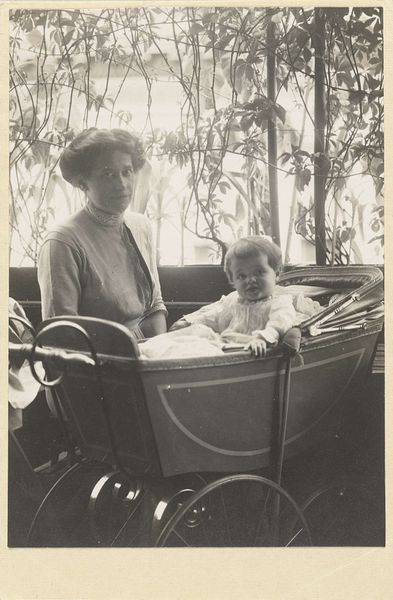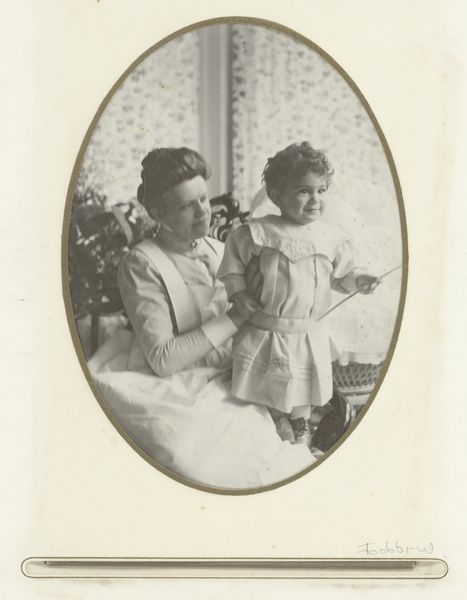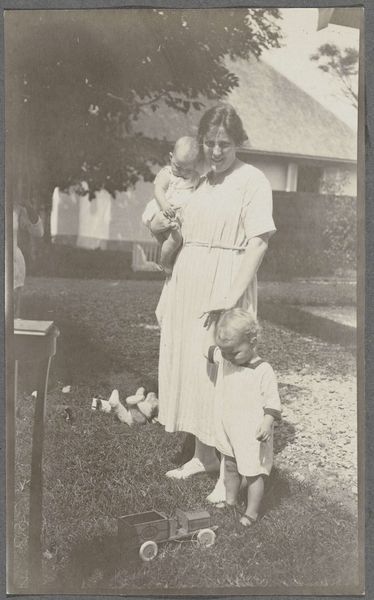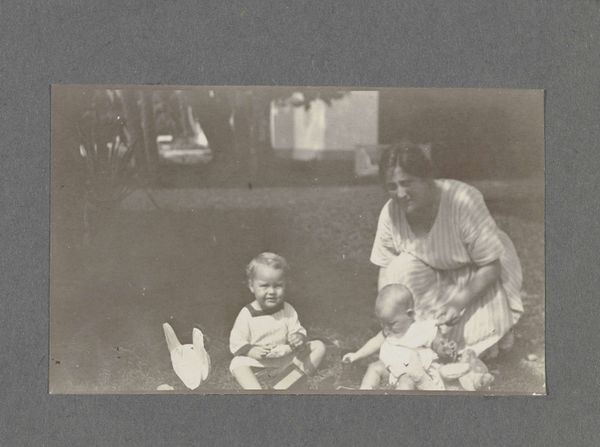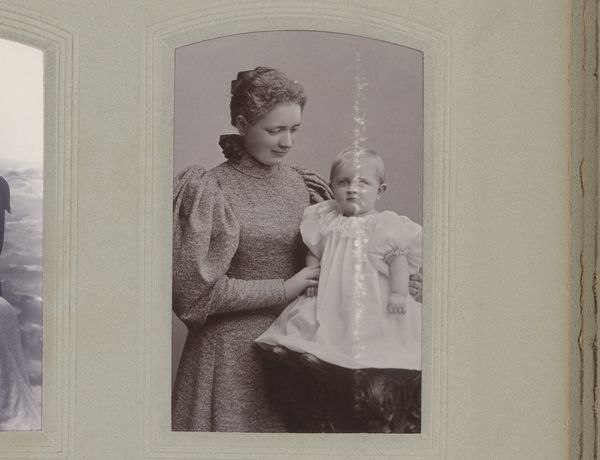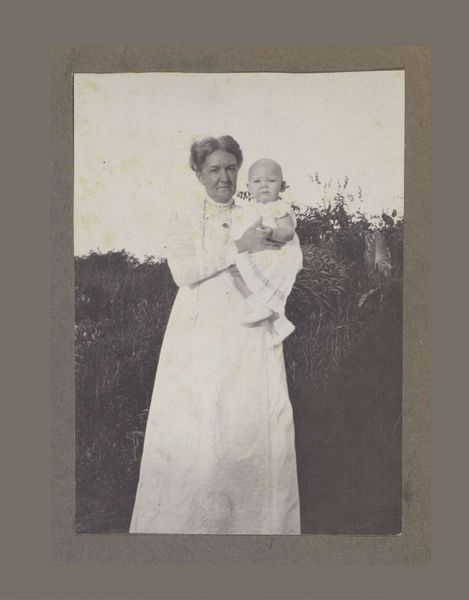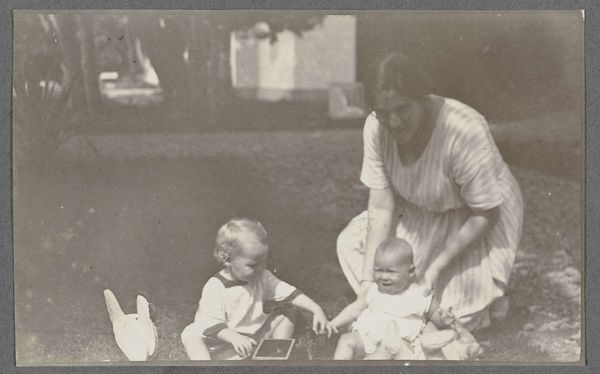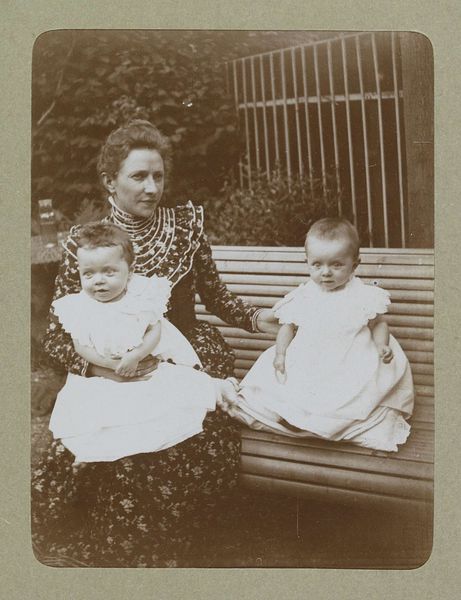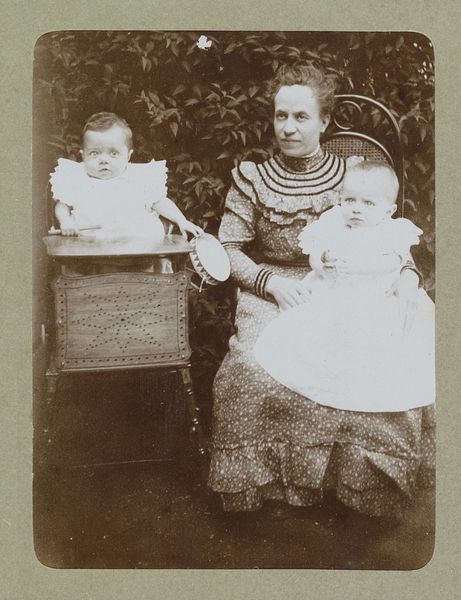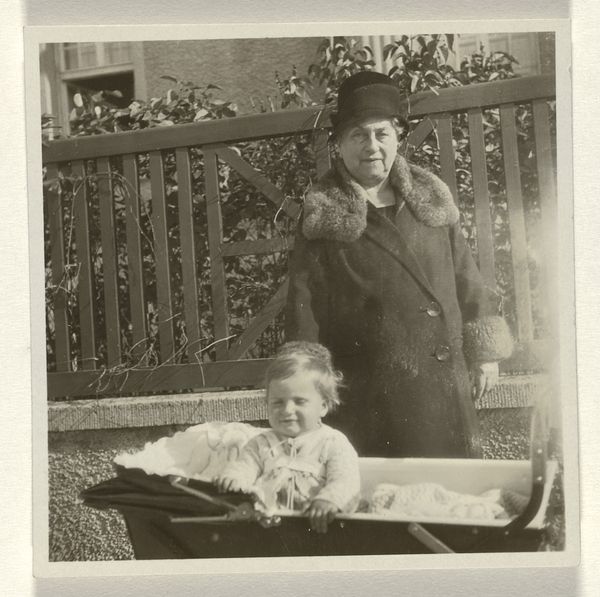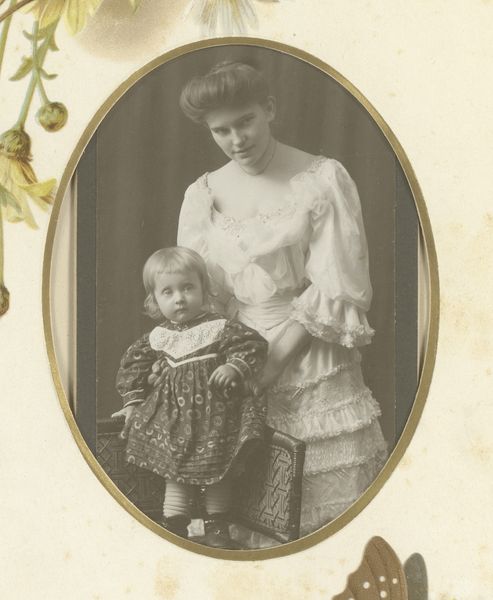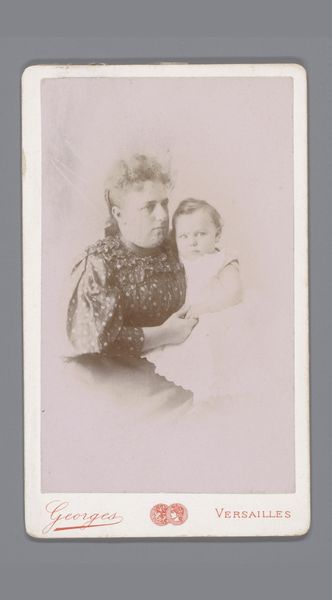
Olga en Marba Titzenthaler, echtgenote en dochter van de fotograaf, in het woonhuis in de Friedrichstrasse, Berlijn Possibly 1912 - 1917
0:00
0:00
photography, gelatin-silver-print
#
portrait
#
black and white photography
#
photography
#
group-portraits
#
gelatin-silver-print
#
monochrome photography
#
realism
#
monochrome
Dimensions: height 152 mm, width 116 mm
Copyright: Rijks Museum: Open Domain
Editor: We're looking at a gelatin-silver print by Waldemar Titzenthaler, possibly taken between 1912 and 1917. It’s a portrait of the photographer’s wife, Olga, and daughter, Marba, in their Berlin home. There’s something so intimate about this, like a captured memory. What strikes you most about this image? Curator: The visual layering, certainly. The mother and child are framed by the curves of the carriage, which is then framed again by what looks like a window overgrown with ivy. These visual symbols evoke a sense of enclosure, perhaps reflecting the protective role of motherhood or even the confines of domestic life for women at the time. What do you make of their gazes? Editor: Well, the mother looks directly at the photographer, inviting us in, while the child’s gaze feels more uncertain, like she's only just noticing the camera. Curator: Precisely. And doesn't the stark black and white contribute to a sense of looking back? These stylistic choices often speak to the photographer's intent. The use of monochrome can distill the scene to its purest emotional elements. The image becomes an icon not just of a family, but of a past era. Editor: That’s fascinating. So, the symbolism in this portrait adds a layer of cultural meaning beyond just a family snapshot? Curator: Absolutely. The setting, the poses, even the monochrome palette, all coalesce into a symbol-laden representation of family, home, and memory. What feelings do those evoke in you? Editor: A bittersweet sense of nostalgia. I guess I didn’t realize how much depth a simple portrait could contain. Curator: Indeed. Images like this remind us of the power of symbols to carry emotions and histories through time, connecting us to our cultural past.
Comments
No comments
Be the first to comment and join the conversation on the ultimate creative platform.
